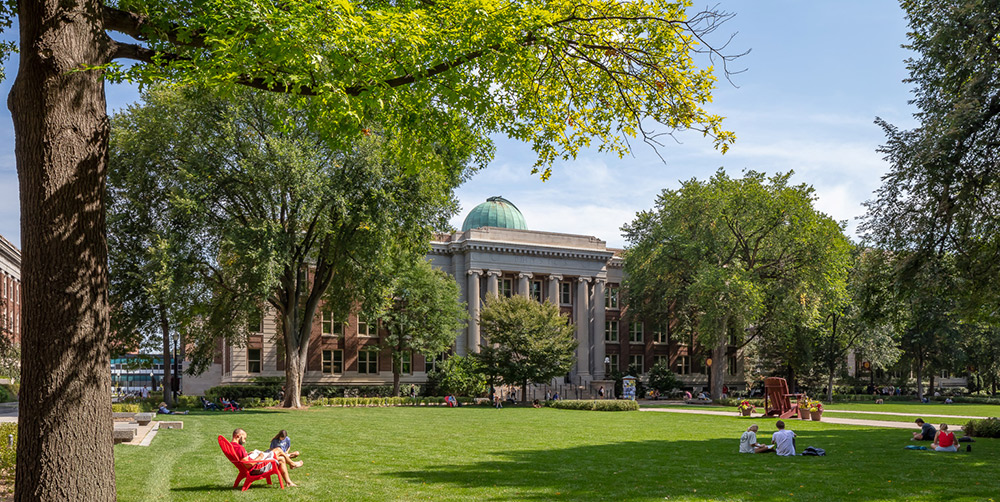In developing countries, more than 90% of the waste is poorly managed.
Waste management is a major global health, economic, as well as environmental issue. Nevertheless, local waste collection and treatment infrastructures are yet to exist in most countries. In reality, recycling is practiced on only 13.5% of waste worldwide and thus only 5.5% of waste is made up of compost.
By 2025, plastic pollution will have emerged as one of the most pressing environmental dangers. The OECD states that plastic production across the world had reached almost 460 million tons in 2023 and may double by 2050 if nothing is done structurally. But only 9% of plastics are presently being recycled efficiently globally.
Whether for public health, the environment, or for the economy, establishing waste treatment systems is a necessity in all nations around the globe. In its development programs, World Vision Minnesota works with populations to sustainably manage waste to achieve the Sustainable Development Goals in 2030.
Improving homes for the conservation of the environment
Hazardous to health stoves: conventional stoves, also known as open cooking fires, are cooking on a large open fire inside or outside the home. The World Health Organization (WHO) reports that about 2.6 billion people cook and heat their homes with solid fuels.
Climate: Rising Sea Levels
Global warming, which is largely a result of human actions over the past hundred years, is one of the key drivers of increasing sea levels, a process with severe implications for coastal communities around the globe. Coastal communities are already experiencing the disastrous impacts of this process, which not only challenges their livelihoods but also their homes.
Fighting Climate Change through ANR
Farmer Managed Natural Regeneration (FMNR) is a technique developed by Australian and 2018 Alternative Nobel Prize winner Tony Rinaudo that contributes to environmental protection, the combat against global warming, reduction of food insecurity, responding to climate change, and improving populations’ resilience to extreme weather.
Waste Management Systems Around the Globe
A Unequal waste generation
According to the World Bank’s What a Waste 2.0 report, published in 2018, the world generates 2.01 billion tonnes of waste every year. Combined with population and urbanization increases in most countries, the number is increasing year after year.
The East Asia and Pacific region generates more waste than any other region in the world, producing 468 million tons per year, or 23% of global waste. As most of this is due to Asia’s high population density, even though an average resident of this region generates less waste annually than the resident of developed countries like the United States or France, the number of populations multiplies the total waste generation of the region.
Actually, wealthy countries, holding just 16% of global population, generate more than one-third of the world’s trash, or 34% of waste.
How is waste treated worldwide
While high- and middle-income nations recycle or compost more than one-third of waste, low-income countries recycle only 4%. According to the World Bank, in those countries only 39% of rubbish is collected and more than 90% of waste is inadequately managed.
Due to the lack of collection systems, trash is dropped on the street or burned by residents. Domestic refuse, when collected, is thrown into open dumps. During their decomposition, open dumps release methane into the environment, a greenhouse gas with a toxicity rating of high.
The impacts of open-air dumping are numerous on surrounding populations. Exposed to disease and environmental degradation, these people are also at the risk of such mounds of trash falling on them. Similar to the tragedies From Addis Ababa in Ethiopia to India’s Ghazipur landfill, women, men, and even kids who live in absolute poverty sort through trash and re-sell it risking their lives.
Waste Management: A Challenge to the Future
Without action, the World Bank’s What a Waste 2.0 report says the quantity of waste generated annually will grow by 70% over the next 30 years. By 2050, that waste will produce 3.4 billion tons of trash and 2.5 billion tons of CO2.
Waste system installation is a huge financial burden to the majority of nations, particularly the poorest of nations, costing up to 20% of the local budget. Nonethelesss, investing in proper and sustainable waste collection and treatment systems is crucial to the economy of a nation. Untreated or not properly treated wastes are a huge cost on the health and environmental sides.
Improving waste management systems reduces the level of greenhouse gases emissions, minimizes pollution and its resultant health impacts on people, and supports job opportunities. With over 15 million people worldwide making a living from waste collection, often more than frequently through informal means, implementation of household waste treatment systems would ensure stable employment and poverty reduction.
Assisted Natural Regeneration (ANR): A Sustainable Solution to the Crisis
Faced with accelerated land degradation, World Vision is implementing Assisted Natural Regeneration (ANR) in 26 countries. The technique has already restored more than 15 million hectares and, as of 2023, trained 88,000 farmers. By regenerating land and building community resilience, this remedy demonstrates that combating waste includes local agroecology practices.
Farmers restoring waste-degraded land with assisted natural regeneration
Environment and children have a shared destiny. Waste, and plastic waste in particular, does not only damage ecosystems. It affects children’s fundamental rights directly. More than one billion children were living in high-climate risk areas by 2024, exposed to air pollution, lack of access to safe drinking water, and land degradation-related malnutrition.
